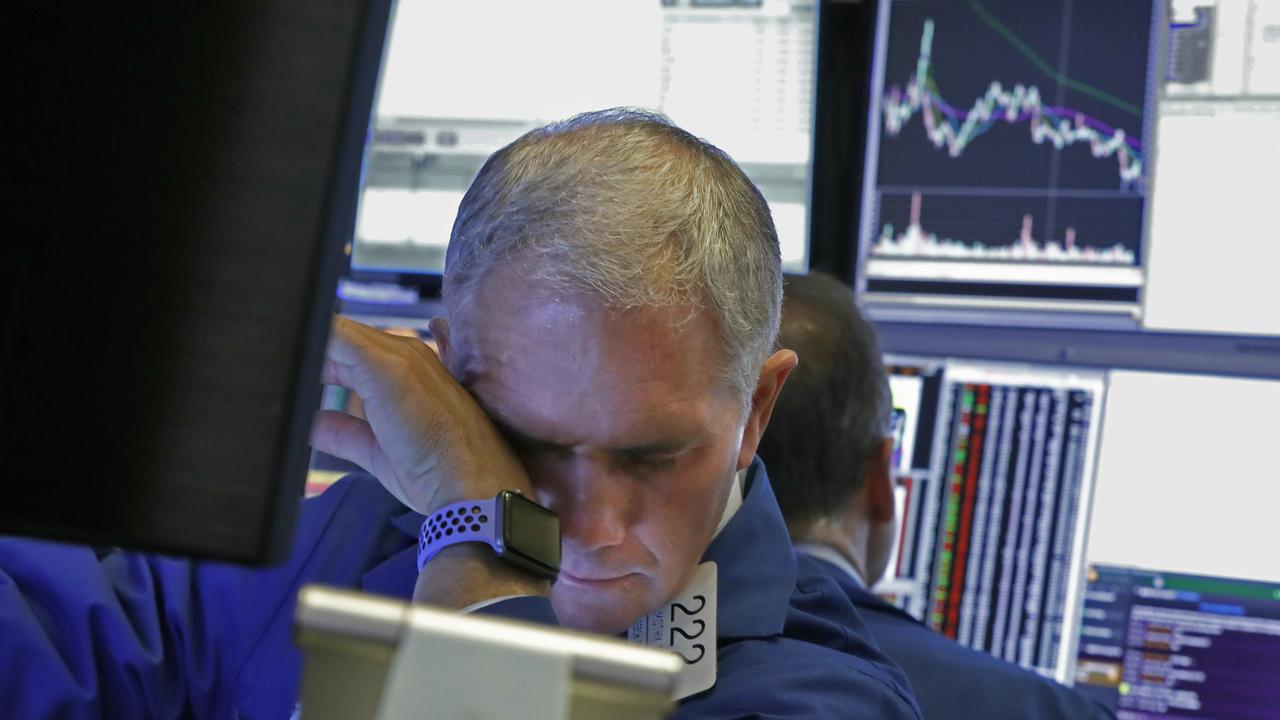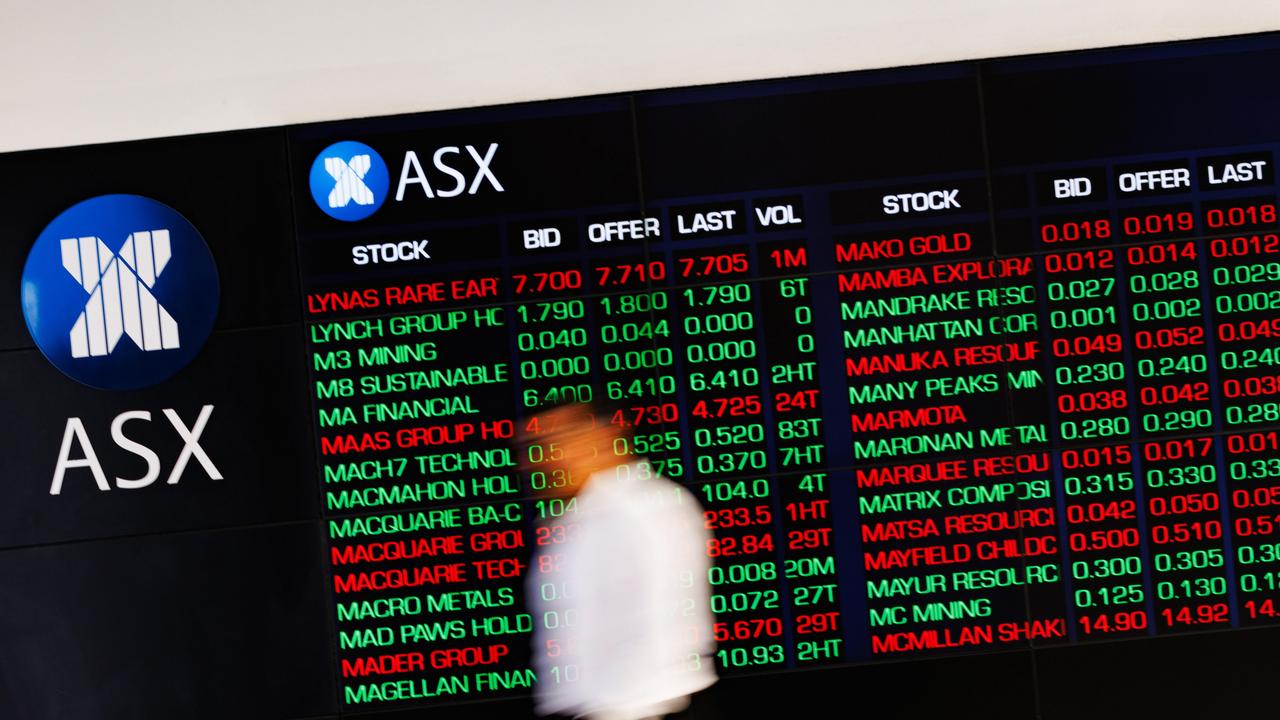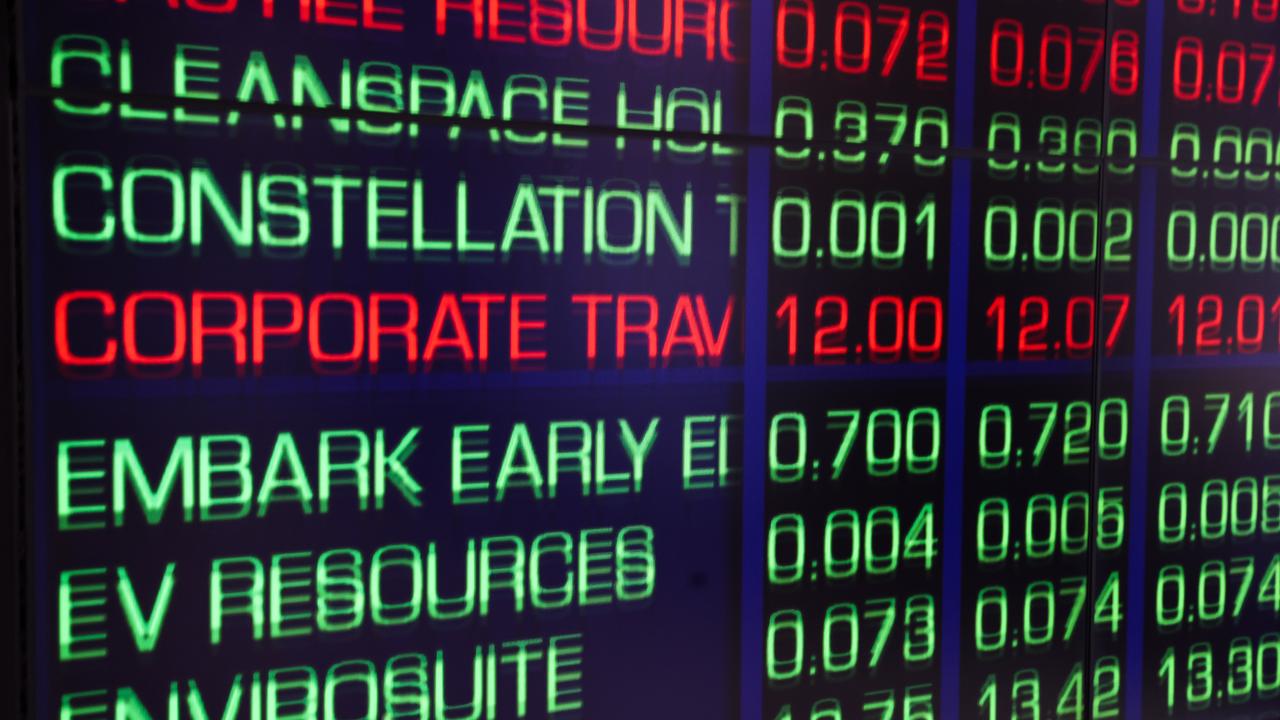Aussie share market’s death spiral halted on stunning rebound
“It’s been a hell of a week”: An extraordinary swing of more than 12 per cent saved the ASX from recording its worst ever result.
Analysts and investors have been left speechless by a stunning rebound on the Australian share market this afternoon, with a swing of more than 12 per cent closing out a historic week.
The ASX200 closed 4.4 per cent higher at 5539.3 after earlier plunging as low as 8 per cent, only narrowly avoiding the worst week of losses in its history.
CMC Markets chief strategist Michael McCarthy said the trading floor had been caught completely off guard by the resurgence that began shortly before 2.30pm, leaving analysts to “wildly speculate” the cause.
“The market had just got back through 5000 and it looked like a big cash buyer stepped up to the plate and it has basically then rose from then all the way to almost 3.30pm,” he told news.com.au.
“It rallied 450 points in less than an hour, it’s an extraordinary move.”
As the final bell rang at 4.10pm, a loud cheer could be heard from exhausted traders left to lick their wounds after the ASX lost $232 billion over the five days.
“It’s been a hell of a week here, a lot of people are very glad to finally hear the closing bell,” Mr McCarthy said.
RELATED: ASX’s worst day since Global Financial Crisis
RELATED: Law firm abandons Sydney office towers on virus fears
RELATED: Oil price war panics investors amid coronavirus crisis
The market has now lost $529 billion since its all-time high reached just three weeks ago on February 20.
“We’ve never seen anything like the intensity and the ferocity of the selling, there’s no script to show how aggressive this sell-off has been,” Pepperstone head of research Chris Weston said.
He said US President Donald Trump’s inaction to counter the economic impacts of the coronavirus coupled with his 30-day travel ban to Europe were the main prods for the spiral.
At midday Australian time yesterday, Trump ramped up travel restrictions and was flimsy on details of a promised stimulus package proposed to ease the looming financial crisis.
“He basically bought a pea shooter to a gunfight,” Mr Weston said.
“The Trump administration is not delivering shock and awe when the markets really need it.
“They needed to go above and beyond when they had the chance and they disappointed.”

Burman chief investment officer Julia Lee said the weight of money shedding from the market this week hasn’t been witnessed for more than 30 years.
“It is a historic move we’re seeing in terms of the market, it’s the worst we’ve seen since the 1987 stock market crash,” she told news.com.au.
“The speed of the losses is unusual but when volatility does spike it tends to cluster, it’s just that we’re seeing extremely big moves.”
The Australian stock market now compared with the Oct 1987 crash pic.twitter.com/muD9xBsI19
— Greg Jericho (@GrogsGamut) March 13, 2020
looks like somebody poured lava over Iress's market map pic.twitter.com/JSdkTlrJgP
— Michael McCarthy (@MicMcCarthy_CMC) March 12, 2020
Ms Lee said the market sees big moves both down and up during times of such uncertainty but the trajectory of global stocks is certain.
“In the last couple of weeks, Wall Street has had plus-4 per cent days as well,” she said. “And you would expect that in this kind of environment.
“We see big up days but ultimately the down days outweigh and the market continues to go lower until it finds a floor.”
THURSDAY’S HISTORIC TUMBLE
Yesterday’s falls eclipsed the pain inflicted on Monday, making it the worst day of losses since the Global Financial Crisis.
The ASX plunged 7.4 per cent to 5304.6 by the close on a day 35-year veteran CMC Markets chief strategist Michael McCarthy described as one of the worst he’s ever witnessed.
“The global impulse is really cruelling the local market,” he told news.com.au. “And the steepness of the falls and the speed of the falls suggest there’s more damage to come.”
The local index reached an all-time high of 7289.7 on February 20 but has plummeted more than a quarter in just three weeks, amounting to an astonishing loss of half a trillion dollars.
The steep falls were inflicted across the board but the energy and banking sectors were particularly smashed, each down 8 per cent.
Major lenders Commonwealth Bank, Westpac, NAB and ANZ were all between 7.8 and 8.8 per cent lower.
Travel companies remain the worst impacted by the virus and the increasingly severe travel restrictions. Both Webjet and Flight Centre fell nearly 20 per cent, while Virgin Australia was down 16.7 per cent.




